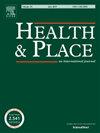The digitalization of young women's food environments in Norway
IF 4.1
2区 医学
Q1 PUBLIC, ENVIRONMENTAL & OCCUPATIONAL HEALTH
引用次数: 0
Abstract
Food environments, which significantly influence dietary patterns and health outcomes, are undergoing an accelerated process of digitalization. Young people are vulnerable to the adverse effects of food environment digitalization, with young women particularly affected due to their heavy exposure to social media. This study explores the process of digitalization of young women's food environments in Norway. Using a grounded theory approach, we conducted 14 semi-structured interviews with young women aged 18–25 years in Norway, complemented by an analysis of secondary materials such as websites, smartphone apps, and social media platforms identified during the interviews. We propose a theoretical model outlining four degrees of digitalization in young women's food environment interactions: analogue, digitally mediated, digitally enhanced, and digital-only. These interactions were influenced by processes at an individual level, through which young women strove to preserve their agency while seeking novelty, entertainment, social connection and self-optimization in relation to their food practices and bodies. Simultaneously, societal processes such as the normalization of technology use, increased personalization of digital services and intensification of exposure to digital food content and marketing shaped young women's action. These can conflict with their individual motivations or complement and reinforce them, thus creating tensions in how agency is exercised in increasingly digitalized food environments. We argue that the digitalization of food environments is likely to augment the complexity and intensity of their effects on health and nutrition, warranting further investigation.
挪威年轻女性食物环境的数字化。
对饮食模式和健康结果有重大影响的粮食环境正在加速数字化进程。年轻人容易受到食品环境数字化的不利影响,年轻女性受到的影响尤其严重,因为她们大量接触社交媒体。本研究探讨了挪威年轻女性食物环境的数字化过程。采用基于理论的方法,我们对挪威18-25岁的年轻女性进行了14次半结构化访谈,并对访谈中发现的网站、智能手机应用程序和社交媒体平台等二手材料进行了分析。我们提出了一个理论模型,概述了年轻女性食物环境互动中的四个数字化程度:模拟、数字介导、数字增强和纯数字。这些相互作用受到个人层面过程的影响,年轻女性通过这些过程努力保持她们的能动性,同时寻求与她们的饮食习惯和身体有关的新奇、娱乐、社会联系和自我优化。与此同时,技术使用的正常化、数字服务的日益个性化以及数字食品内容和营销的增加等社会进程影响了年轻女性的行动。这些可能与他们的个人动机相冲突,也可能是对个人动机的补充和加强,从而在日益数字化的食品环境中如何行使代理权造成紧张。我们认为,食品环境的数字化可能会增加其对健康和营养影响的复杂性和强度,值得进一步研究。
本文章由计算机程序翻译,如有差异,请以英文原文为准。
求助全文
约1分钟内获得全文
求助全文
来源期刊

Health & Place
PUBLIC, ENVIRONMENTAL & OCCUPATIONAL HEALTH-
CiteScore
7.70
自引率
6.20%
发文量
176
审稿时长
29 days
期刊介绍:
he journal is an interdisciplinary journal dedicated to the study of all aspects of health and health care in which place or location matters.
 求助内容:
求助内容: 应助结果提醒方式:
应助结果提醒方式:


